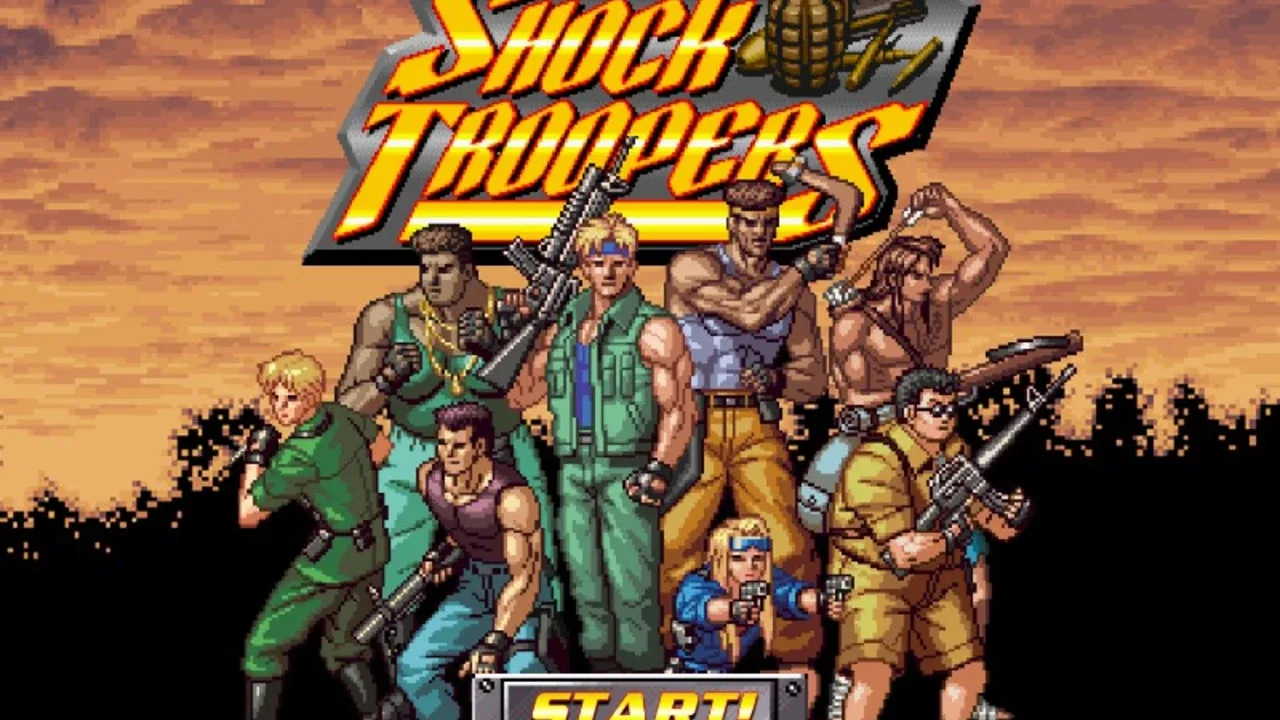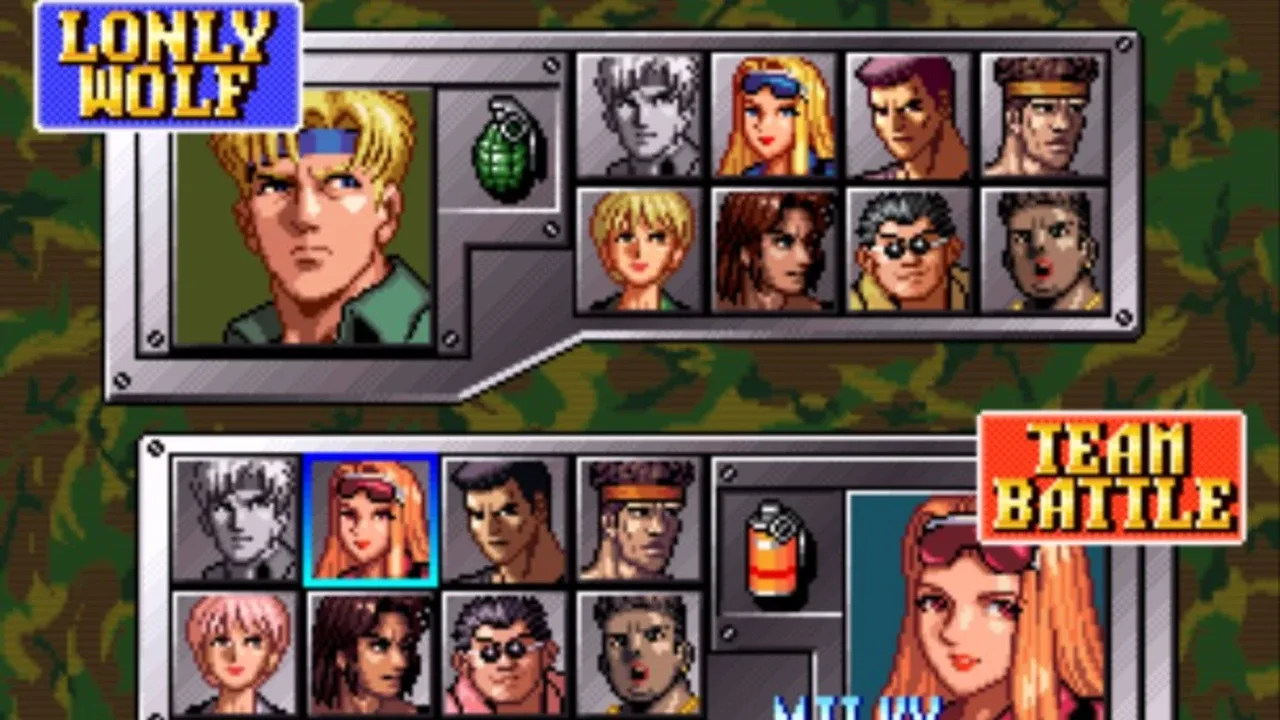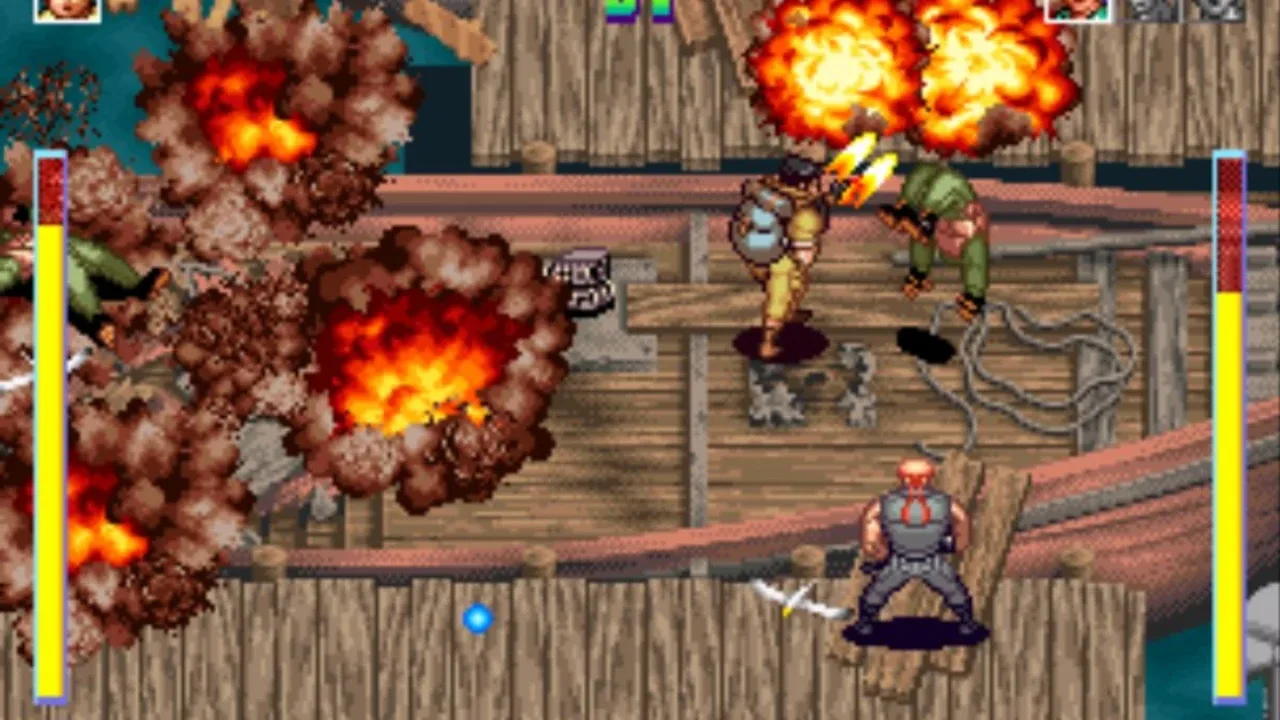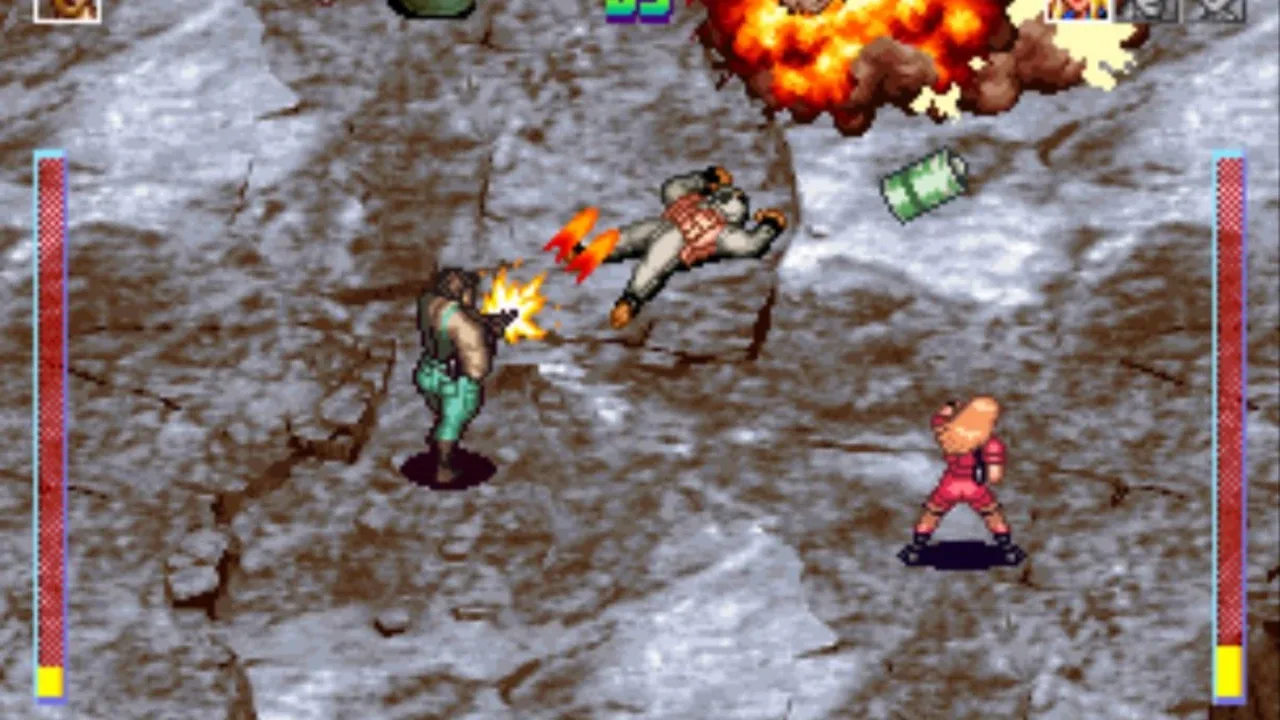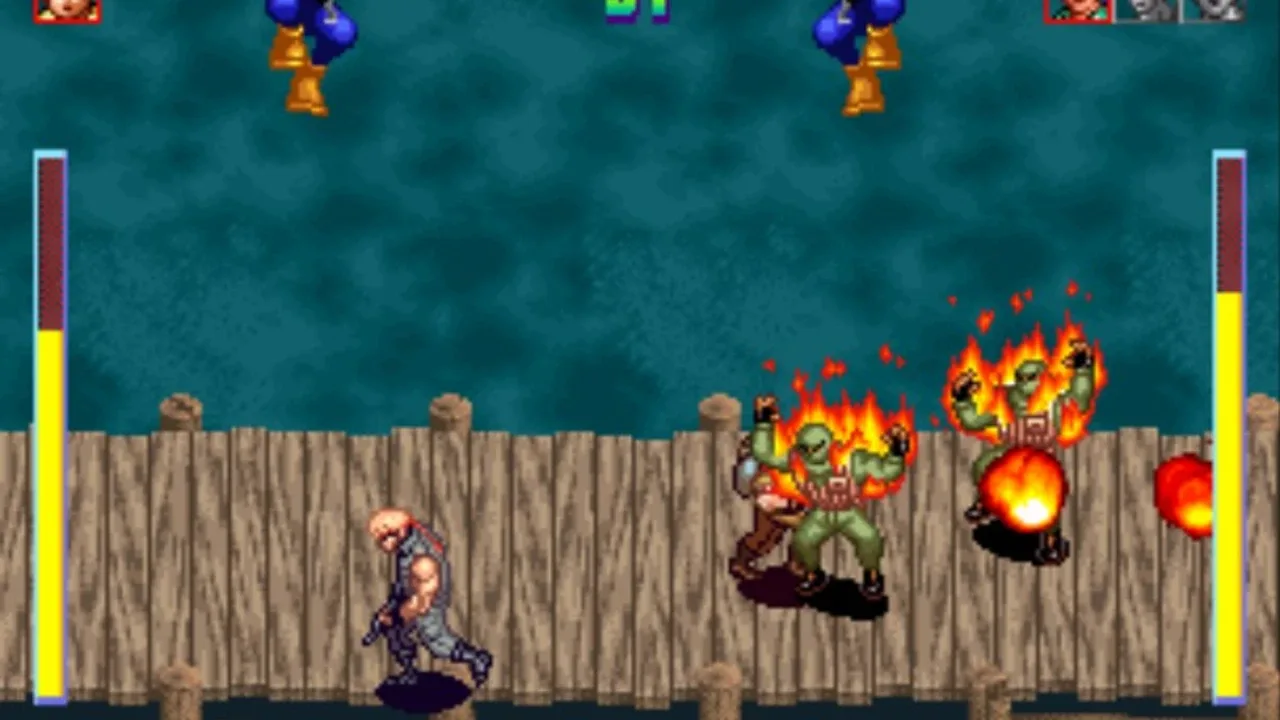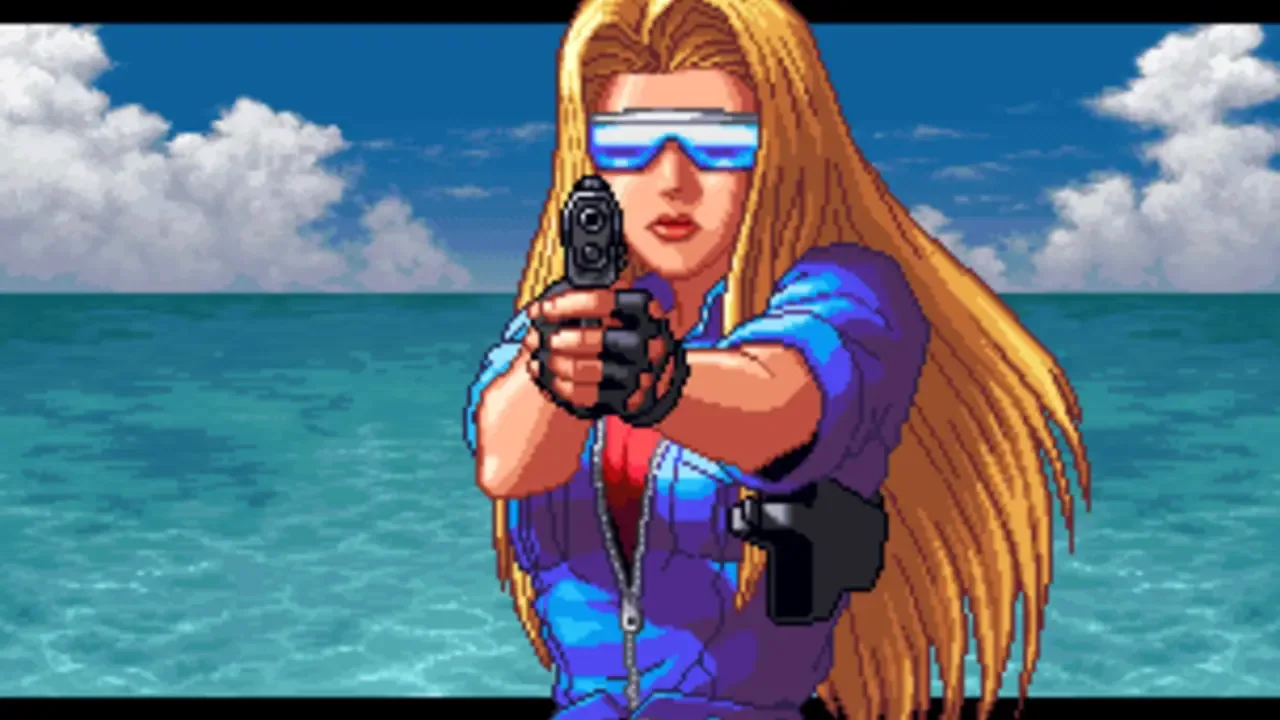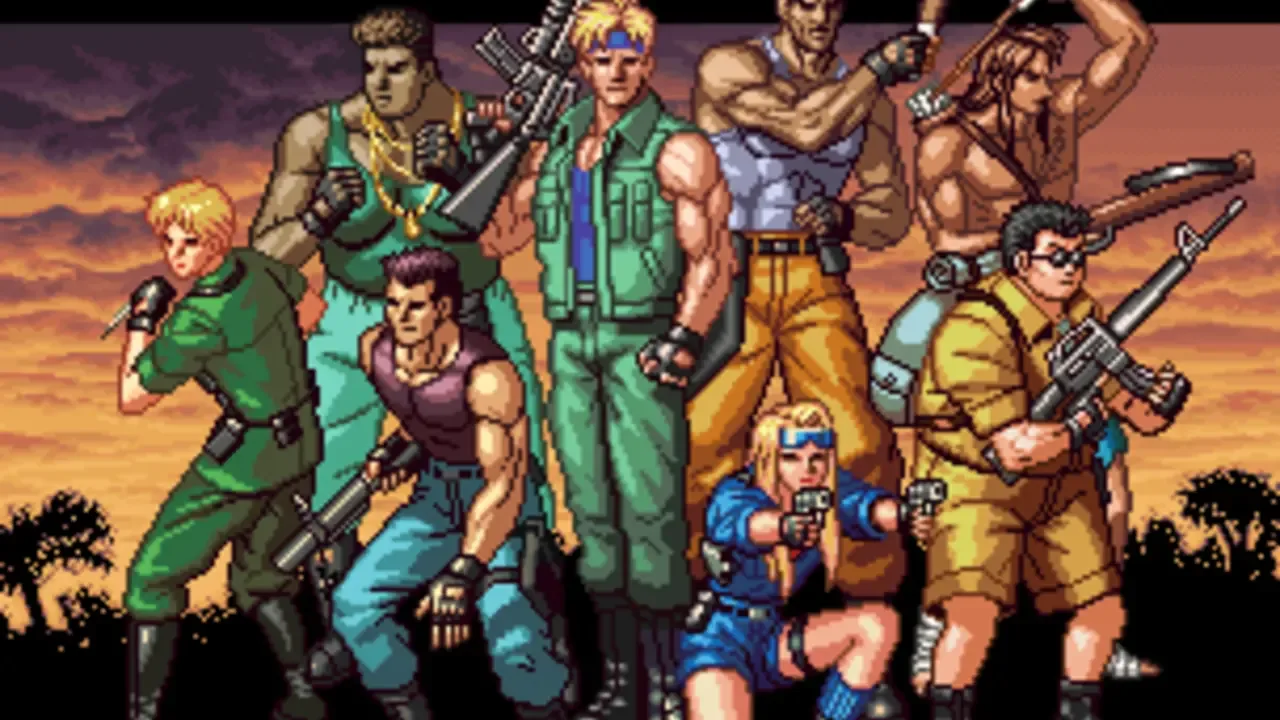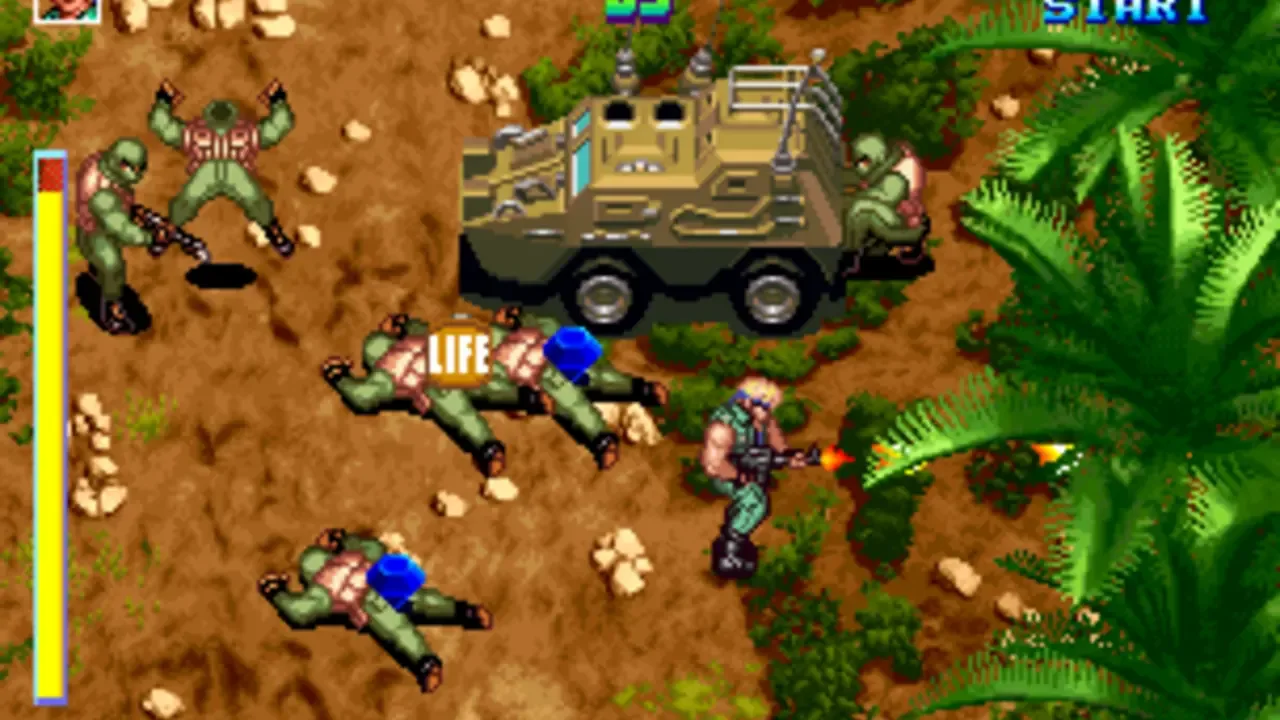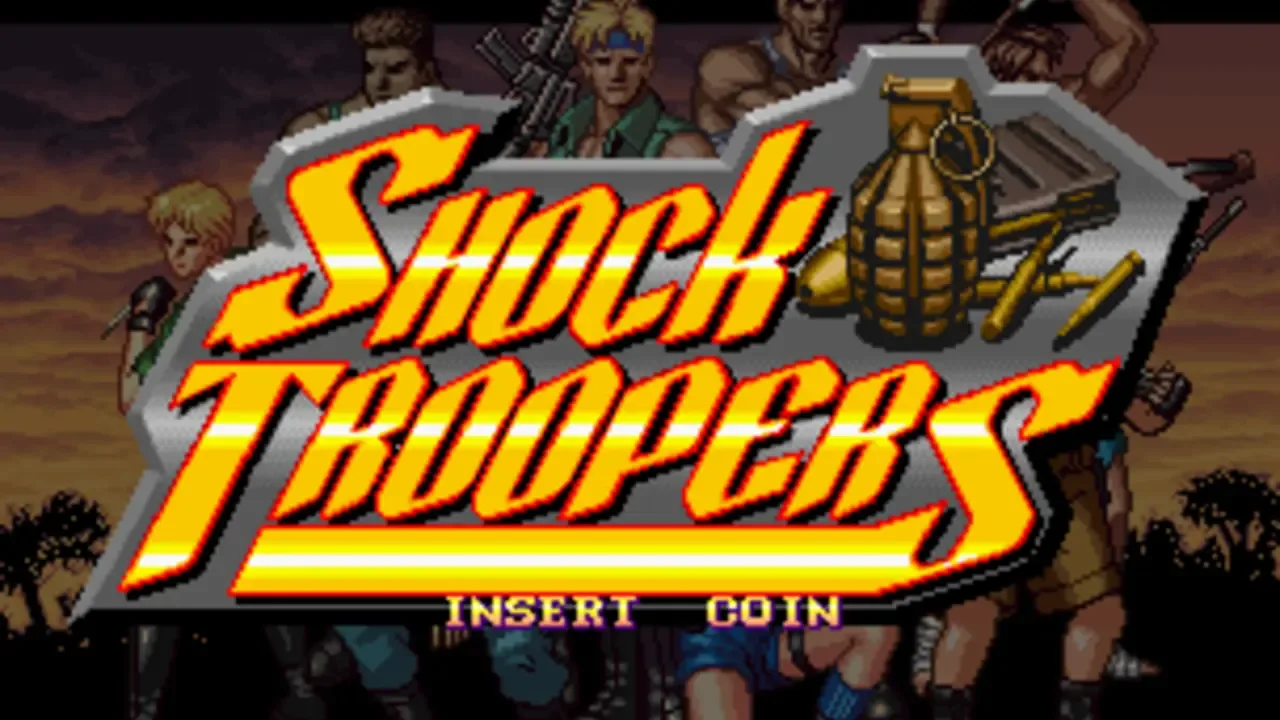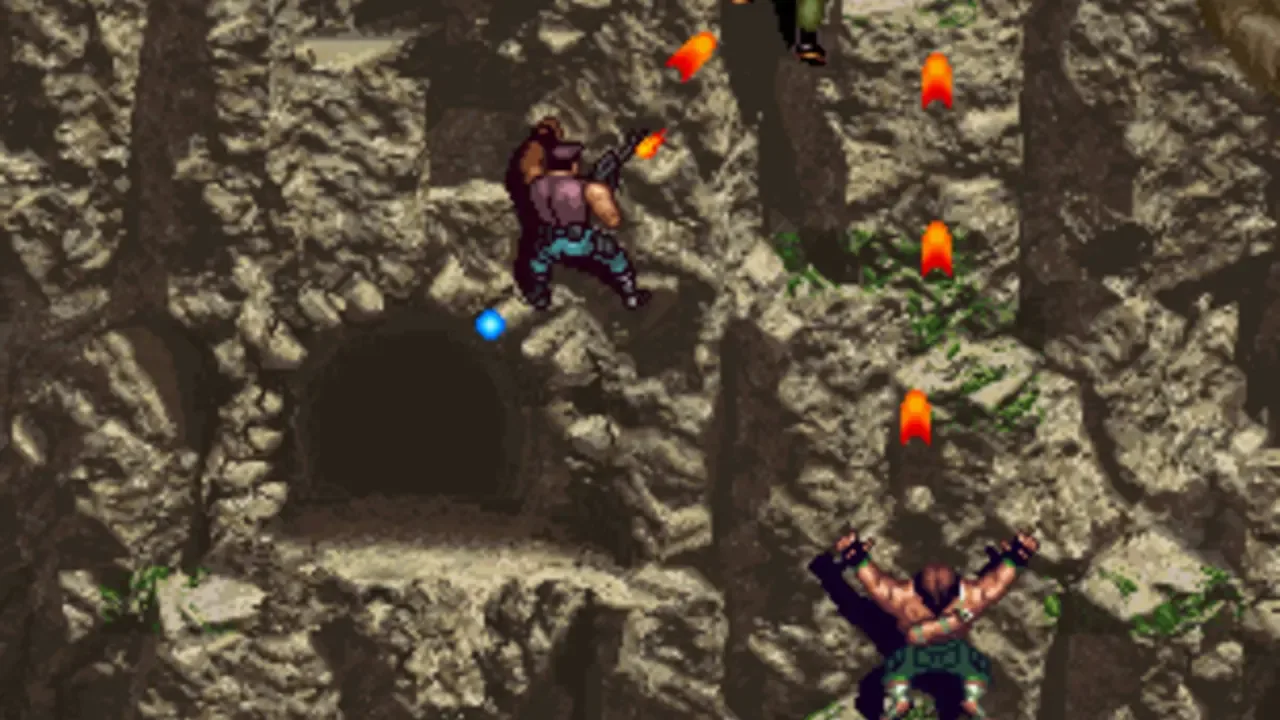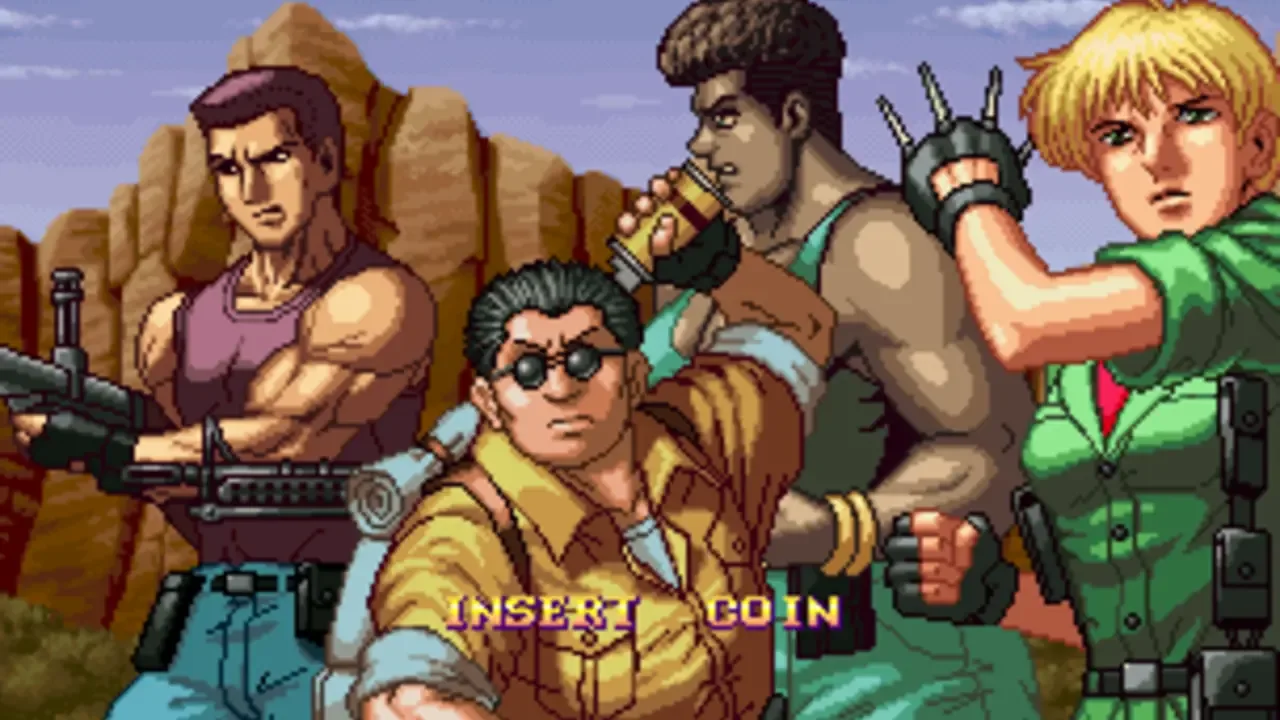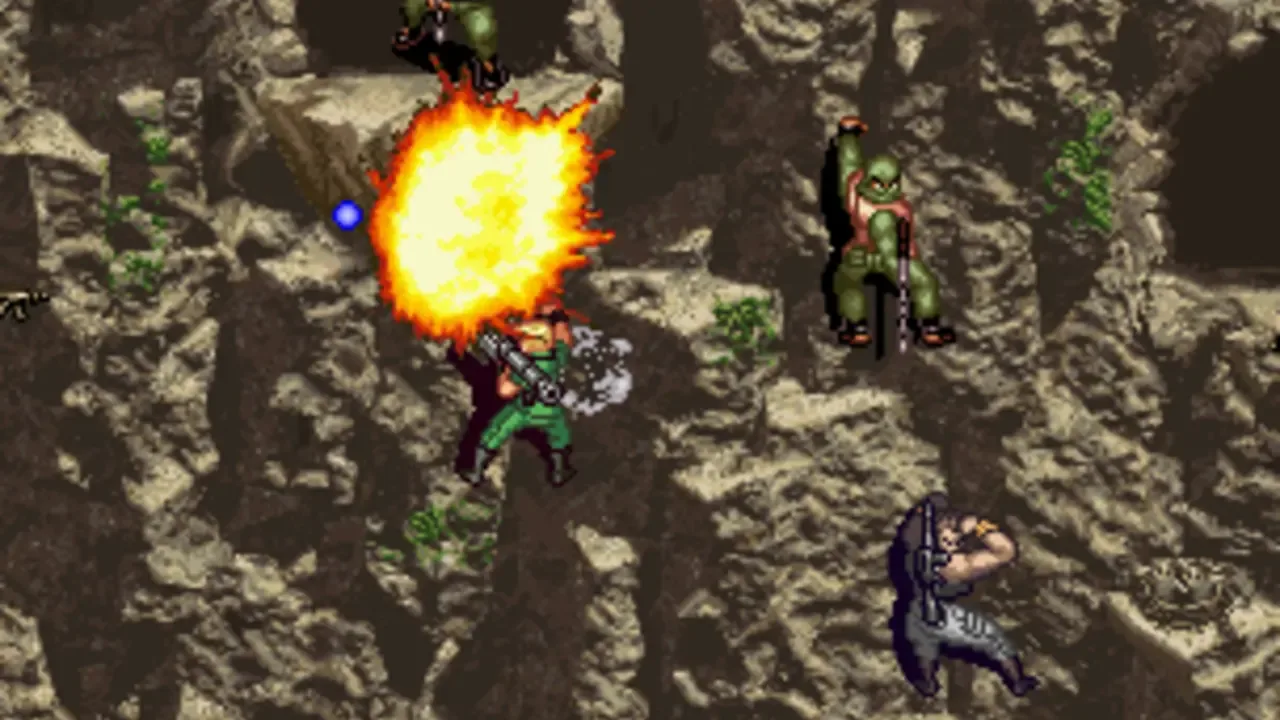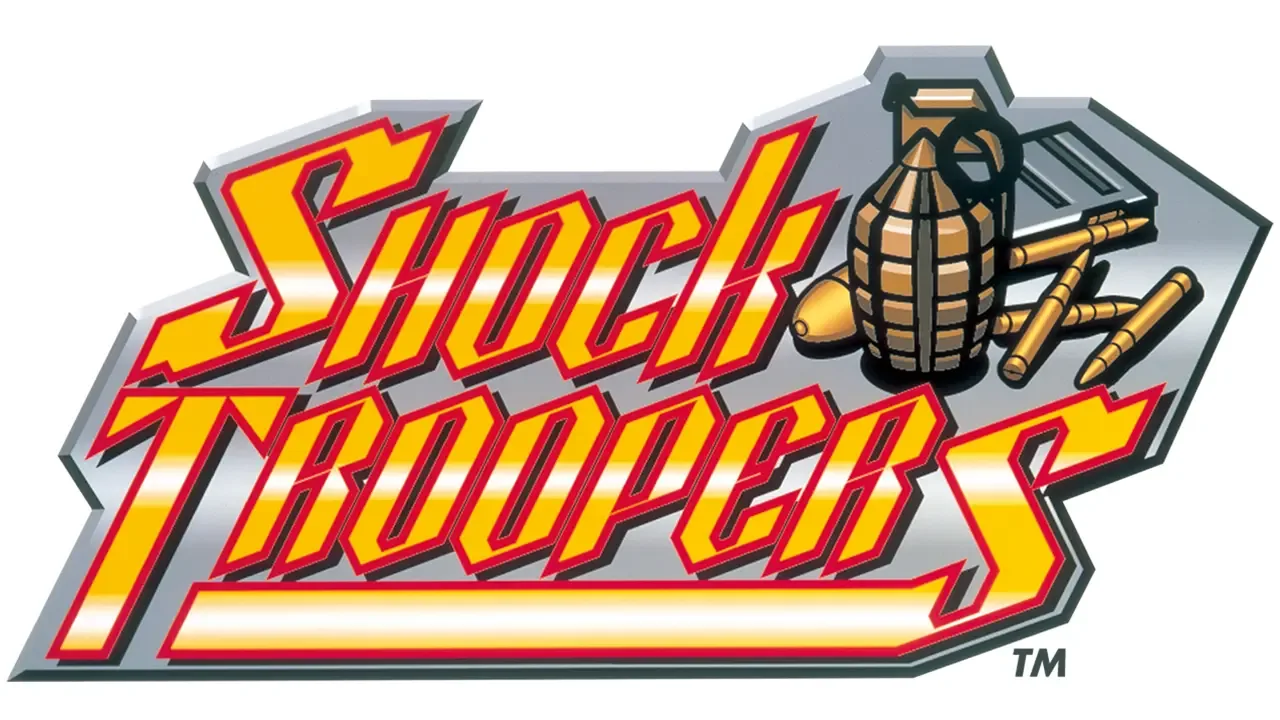Shock Troopers
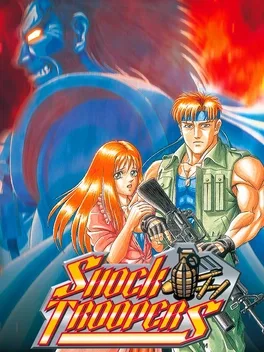
Parent game
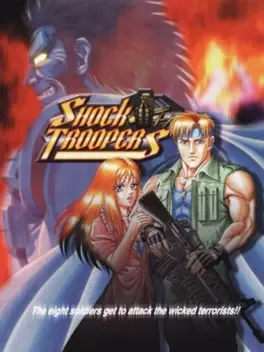
Shock Troopers is a 1-2 player game where players select one of eight characters to play as. Each character has their own attack. Players also have to choose one of three routes to take. The object of the game is to go toward the end of the level and defeat the end-of-level boss, which is usually a huge vehicle. Crates that are scattered throughout the levels can be broken into to reveal new weapons and power-ups. There is a team mode where players have to select three characters. The characters can be switched on-the-fly during gameplay, which is useful if one of them is badly injured. Players can use the other teammates until life-ups can be found.
Could be interesting
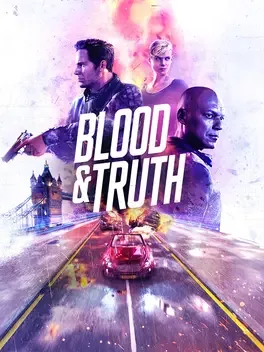
Put on your PlayStation VR headset and ready yourself for hard-hitting action in the gritty and glamorous London underworld. You are elite Special Forces soldier Ryan Marks, on a desperate mission to save his family from a ruthless criminal overlord. Grab your PS Move motion controllers and blast anyone in your way as you go face to face with enemies, uncover secrets and experience the thrill of the chase in a high-octane action narrative inspired by PlayStation VR Worlds’ ‘The London Heist’ experience.
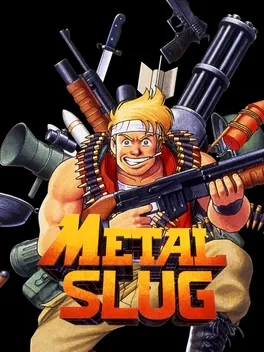
Metal Slug is a 1996 run and gun arcade video game originally developed by Nazca Corporation and released by SNK for the Neo Geo MVS. It is the first installment in the eponymous series. Set in 2028, players assume the role of Peregrine Falcon Strike Force soldiers Marco Rossi and Tarma Roving on a fight against the Rebel Army led by Donald Morden and overthrow his coup d'état to prevent a New World Order.
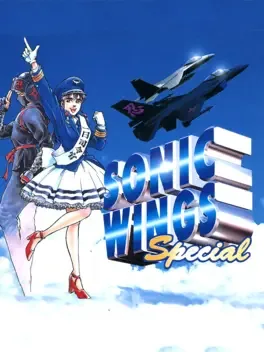
Sonic Wings Special is a 1996 vertical-scrolling shoot 'em up that combines the features in Sonic Wings, Sonic Wings 2, and Sonic Wings 3. It was ported to arcade as Sonic Wings Limited. The home console version adds new characters and endings, new bosses, updated graphics and unlockable planes. There are also Time Attack and 2-player modes. The game uses a branching stage system, so it is impossible to see all levels in one sitting. There is a total of 14 playable characters and many different endings (some of which are reused from previous games in the series). Overall the game has a comic feel. As of Summer 2012, the Android version of Sonic Wings Special has only 4 playable characters with 4 endings and 9 stages. However, the publisher is planning to add further elements of the original version.
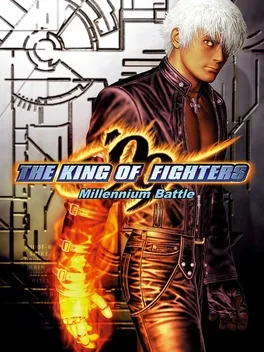
"The King of Fighters '99: Millennium Battle" is the sixth game in The King of Fighters series by SNK. Unlike in previous games of the series, there are four characters per team instead of three, with the fourth serving as a "Striker", a fighter whose function is only to enter a match, attack the opponent and leave without replacing their teammates. In total, there are seven teams, each containing four characters, four Team Edit characters and a boss.
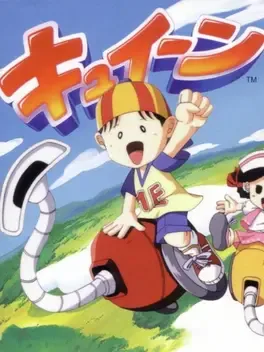
Kyuiin is a horizontal shoot-'em-up set in a fairy tale world. The players control a boy (and a girl in 2-player mode) who flies around on a vacuum cleaner fighting an array of fairy tale characters like Snow White, The Big Wolf, Frog Prince etc. In addition to a standard primary attack there is an ability to suck up certain enemies and projectiles into the vacuum thus building up a special power. Once activated this special power sends back all enemies that have been sucked in into a beam of energy and it grants a short period of invincibility. There is also a backfire cannon helpful against enemies attacking from the left side of the screen. If the boy is hit once he loses all his weapon upgrades, and a second hit destroys the boy.
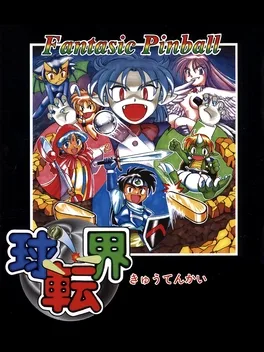
Fantasy-themed Pinball game, which puts the player in control of a trio of heroes out to prevent the Lord of the Underworld from taking over the world. From the same developer as the Devil's Crush port for Sega Genesis/Mega Drive.
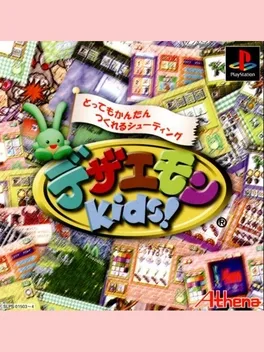
Dezaemon Kids! is a title in the Dezaemon series that allows players to create their own shoot-'em-up games. The players can design levels and enemies by themselves or choose from a number of presets, as well as compose musical themes for the levels. The game has a simplified colorful interface which makes it targeted for younger audience. It also boasts fully-voiced tutorial, a large amount of sample data, a horizontal scroll option, and 2-player simultaneous play option. The second game disc contains 102 sample games created in Dezaemon Plus.
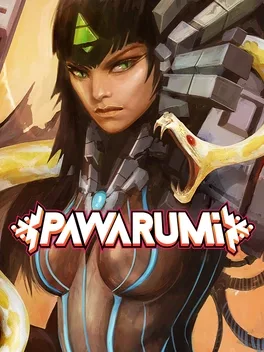
Pawarumi is a modern shoot’em up set in a retro futuristic sci-fi pre-Columbian universe. You’ll take control of the almighty ship Chukaru and its three unique weapons! Shoot wisely to either do double damage, heal yourself or charge your Super Attack!
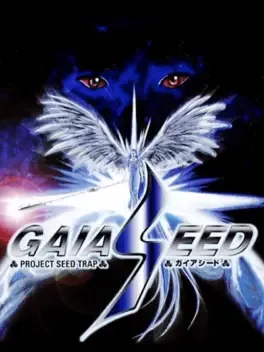
Gaia Seed is a horizontally scrolling shooter from Techno Soleil. The game comes from the fabulous line of classically-styled Japanese shoot 'em ups, bursting at the seams with parallax scrolling, screen-filling bosses and other classic effects that you could count on from the games of this era. But the real beauty of GaiaSeed lies in its subtlety. The game has tight control, precise bullet collision, and a simple powerup system, while the haunting soundtrack stands out for its techno/ambiance mood, adding to the subliminal nature of the work. You have a single ship choice and three difficulties. Gaming veterans will want to start on HARD, which differs only slightly if at all from NORMAL, and isn't particularly challenging anyway. You get two extra credits in NORMAL, for a total of 5, which is ample if you want to credit feed your way to the best ending. No one should touch EASY, since it limits you to reaching Stage 4. There are 7 stages with 3 possible endings, none of which are affected by credit usage. Power-ups consist of 2 main shots (RED and BLUE), 2 sub-weapons (YELLOW and GREEN), and an eIntense Shot' based on your main weapon which basically acts like a Power Bomb. Main weapons stack up to 3 times (RED: starts on 1 shot then 2, 3 and finally 4 shots), sub-weapons don't stack. Lose a ship and you lose your sub-weapon, while your main weapon goes down one level. BLUE is the Laser Shot, a straight line weapon with strong frontal attack which increases in thickness and power as you stack it. The laser's eintense shot' is a massive sausage of light cutting across the screen and wiping out all in its path. RED is Needle Shot. This is your typical V-shot weapon. Less powerful than BLUE, but when stacked 3 times has a wide ranging spread. The intense shot is a series of blue homing orbs target enemies and weak points on bosses, making this the best main weapon. GREEN is the Cipher Wave, the best sub-weapon since it fires four blobs which home in on enemies and can attack craft which are behind you, which is essential during boss fights. YELLOW is the Energy Blaster and acts like an additional V-shot weapon. Absolute rubbish. With such a simple weapons set most players will opt for a RED and GREEN combo for the game's duration. Which isn't a criticism. Gaia Seed doesn't distract you with superfluity; it's functional, with a focus on dodging and shooting. What's especially cool, and sets it apart from other shmups, is that both your health bar and Intense Shot bar are continuously recharging. This effectively gives you infinitely spawning power bombs and infinite health - but it doesn't break the game's balancing. Enemies frequently use screen-filling beam-based draining weapons, forcing you to let off a volley of shots and then scramble out of the beam's attack before your life is fully drained. With bosses this creates some intense battles of endurance - especially if you're trying to beat them by letting the timer run down (those are some pretty intense 120 seconds). After escaping a draining blast you can lick your wounds at the screen's edge, healing while avoiding bullet patterns. The patterns are fairly busy but without ever reaching danmaku levels of weaving. A slight comparison could be made to Deep Blue on the PC Engine, which had a recharging health bar and encouraged enemy avoidance (as pointed out by Mag Weasel). A mention must go to Gaia Seed's timed bosses. Defeating them by letting the timer reach zero doesn't do much during the main game apart from giving you a sense of accomplishment, but if you want to see the best ending you'll let the two final Stage 7 bosses' live. Visually almost everything is sprite based, though it varies in terms of quality. The first stage contains hundreds of massive though pixelated objects moving around, while the second has some interesting Mode 7 styled screen rotation effects. Stage 3 contains some decent parallax scrolling, though not as good as in Thunder Force IV. Subsequent levels are reasonable but without flair. The stand out element of Gaia Seed though has to be its soundtrack, which almost warrants download alone. It's extremely unconventional, being a blend of ambient music with chanting, classical music, hip-hop and thumping techno. Stage 2's track almost sounds as if it's been taken from Panzer Dragoon Saga. It's eclectic, strange, and very good. The sole composer was Xacs Ishikawa, also known as Naoto Ishikawa, a fairly obscure composer connected to works like Psyvariar and Touhou. Interestingly, he also collaborated with Harumi Shiina to remix Koji Endo's King's Field soundtrack, to create an album called Invitation to the Graveyard ~ King's Field I Arrange Collection.
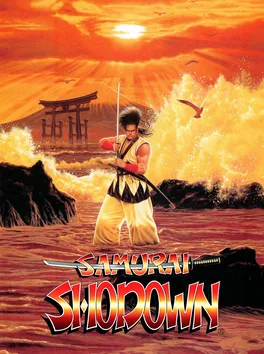
In early Japan, a man named Shiro Tokisada Amakusa preaches a heretic religion. Little does anyone know that Amakusa is really a servant of the evil Ambrosia, who took over Amakusa's body. Ambrosia wishes to shroud the world in darkness. Now, choose between 12 warriors (and 3 bonus characters) to fight for the honor of destroying Amakusa, and fulfilling a mission.













